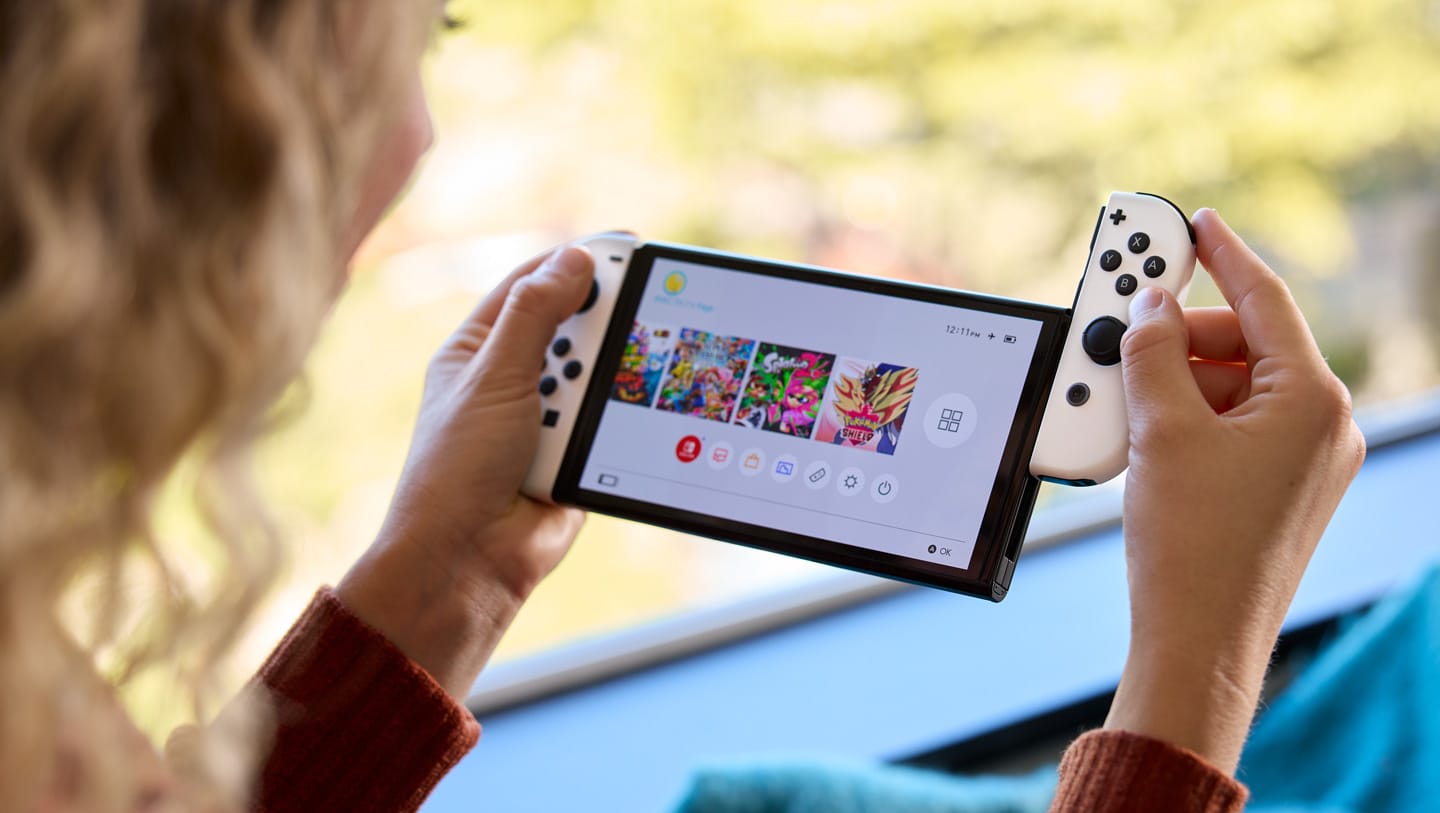Nintendo Switch OLED: 5 features I wish it it had (and I don't mean 4K)
The Switch OLED is here, and while 4K support may have been a pipe dream, here are five realistic upgrades we think Nintendo should have included


Nintendo has just announced the new Switch OLED, dropping it on us as suddenly as a Thwomp on a hirsute plumber. Its upgrades over the original model include the headline larger OLED screen, better built-in speakers and a sturdier kickstand that won't feel like it's made from a dried lasagne sheet painted black. There's more too – you can read all the differences in our Nintendo Switch vs Switch OLED guide if you want the gritty details.
Now, if you're excited to get your Nintendo Switch OLED pre-order in right away, don't let me bring you down. The addition of OLED is a great thing for the Switch, and those bright and bold Nintendo games are really going to benefit from the more advanced screen.
But personally, I'm a bit disappointed with the update. It's not because this isn't the fabled 'Nintendo Switch Pro' with 4K gaming that the rumours have been promising us. I'm actually completely on board with Nintendo making a new Switch that's just filled with small improvements all over, making for a much better whole. That's what Apple often does with the iPhone, and it seems to work pretty well for them.
But I don't think Nintendo has included enough improvements, and in particular has missed out on some extremely obvious stuff that actually would make me want to pick up this console and drop my old Switch like a battered sword in Breath of the Wild. Here are the top five features it missed out for me.
1. A 1080p screen
The new Switch's OLED screen is larger than the old model's at 7 inches, but is exactly the same HD resolution: 1280x720. This means it's actually going to look marginally less sharp (though it will be a massive improvement overall). I wish that Nintendo had been able to up the resolution to 1080p while it was at it, especially since this new Switch is more expensive than the old one, and the old one never dropped meaningfully in price – it would really feel like an increase in value if it were higher resolution.
The old Switch was capable of 1080p gaming – that's what it supports when docked. The dock includes a fan, and it always appeared that the reason the device was limited to 720p was because it might run too hot if it tried to do 1080p without the fan.
But that was in 2016. Here in 2021, it should be possible for the same chip to run cooler, if it's made with newer processes. Upgrading chips in this way is common in consoles: it's what enabled the 'Slim' versions of PlayStations, and the refresh of the Xbox 360 that didn't melt inside any more.
Get all the latest news, reviews, deals and buying guides on gorgeous tech, home and active products from the T3 experts
So given that we know the Switch's chip is powerful enough for 1080p, and it should be possible to make it run cool enough to not need the fan, I demand a 1080p screen, dammit!

Wouldn't she be happier on this bus if she could use her AirPods or whatever? Of course she would.
2. Bluetooth headphones support
I just… I don't know what is happening here. I have been told by people in the industry that around 80% of new headphones sold are wireless earbuds. These are what people want to listen to. They are convenient. They are grab-and-go, like the Switch. And they don't work work with the Switch. Or the Switch OLED, inexplicably.
Why Nintendo won't add this very basic feature, I cannot imagine. They can suffer from a bit of audio lag, it's true, but… who cares? I'm on a train, I'm already not exactly giving it an esport level of focus.
3. HDR support
Though this isn't the Switch that brings us 4K, it would have been great if Nintendo had added support for the other big video revolution of the last few years: HDR. This expands the range of colours that are shown on screens, while also increasing dynamic range (ie, the difference in brightness between the brightest white and the deepest black). It makes it easier to see what's happening in dark games, and bolder games look more vibrant and pop-py.
And adding HDR support doesn't require the same power as adding 4K support – for example, the Xbox Series S offers advanced HDR formats, despite being limited to Full HD output, just like the Switch OLED. HDR support would have really made the most of the OLED screen (the technology might as well have been developed especially for showing HDR at its best), and would've also made the console a worthwhile upgrade for playing on my TV at home.

The stand makes it ideal for watching video! If only there were video to watch.
4. Netflix and other streaming services
This is one Nintendo could yet fix! After all, it's only software. To date, there are three (3) streaming services on Switch: Hulu, Funimation and YouTube. Adding a lovely seven-inch OLED screen would make the Switch OLED a pretty great video device, if only I could stream from any of the services I use, with Netflix and Amazon Prime Video being the obvious start.
It really would make the Switch OLED the ultimate travel device, especially if you could download things to watch offline to the microSD card (you can have up to 2TB in there, after all). Tons of great games, hours of movies… but you only get the former right now. Hopefully that will change at some point.
5. Fast charging
The Switch OLED promises pretty good battery life, and I'm fine with Nintendo not doing anything to majorly extend it (though obviously that would be nice). The amount of time it takes to fully charge also hasn't changed, at three hours, and that's what I would have liked to see some improvement on.
According to people online who've carefully measured such things (such as switchchargers.com), the Switch only charges at 18W maximum. USB-C is capable of much more than that, and even Nintendo's own AC charger is actually rated for double that (at 39W) – it just appears that the Switch can't make the most of what it offers. It would've been nice if Nintendo had opened this up in the Switch OLED, so you could charge and go in much less time.

Matt is T3's former AV and Smart Home Editor (UK), master of all things audiovisual, overseeing our TV, speakers and headphones coverage. He also covered smart home products and large appliances, as well as our toys and games articles. He's can explain both what Dolby Vision IQ is and why the Lego you're building doesn't fit together the way the instructions say, so is truly invaluable. Matt has worked for tech publications for over 10 years, in print and online, including running T3's print magazine and launching its most recent redesign. He's also contributed to a huge number of tech and gaming titles over the years. Say hello if you see him roaming the halls at CES, IFA or Toy Fair. Matt now works for our sister title TechRadar.